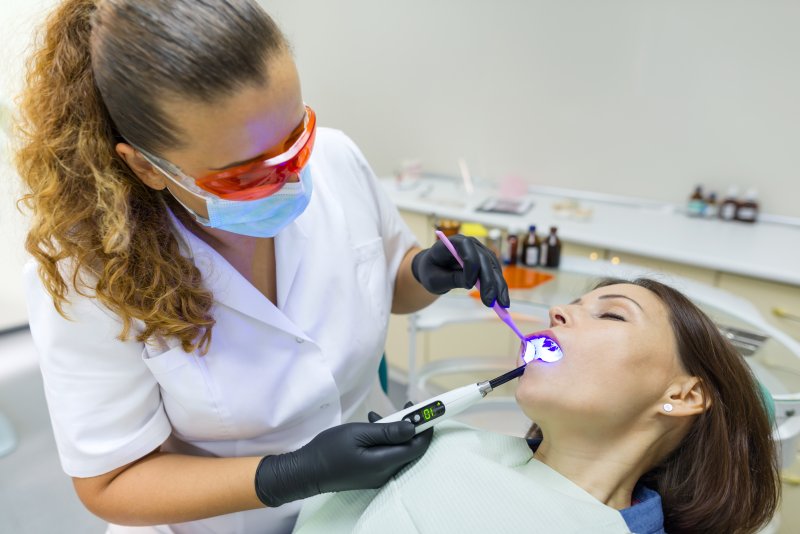Last Updated on: 5th December 2024, 08:28 am
Intravenous sedation is defined as the procedure by which depressant drugs of the Central Nervous System are administered intravenously to eliminate or reduce the mental and / or motor restlessness of patients.
Sedation
For a large number of people, going to the dental office is a stressful event, which is why it is very common for dentists to find patients with a high degree of anxiety and fear at the prospect of undergoing even the simplest of dental treatments. Over the years, different methods have been sought to reduce stress and anxiety in patients at the time of a dental consultation.
Stress and anxiety can be reduced by psychological or pharmacological techniques; for this reason, the demand for sedation by patients is increasingly frequent. Conscious sedation is a pharmacological alternative or the process of calming an apprehensive or very nervous patient through the use of systemic drugs without the patient losing consciousness.
Conscious sedation aims to achieve an optimal balance between the safety and well-being of the patient, which requires careful graduation when administering sedative and analgesic drugs and correct monitoring of the respiratory, cardiovascular and central nervous systems of the patient.

Anesthesia reduces or numbs sensations. Conscious sedation has the objective to provoke a state of well-being, indifference, and relaxation in the patient, while maintaining natural protective reflexes as the patient does not enter a deep state. This motivates dentists to expand and improve their service to patients. These professionals must acquire the basic knowledge and skills to properly select and apply an anesthetic drug.
The basic management of conscious sedation requires a systematic review of the scientific literature of conscious sedation in dentistry.
Anesthetic treatment must be carried out by professionals since improper or inappropriate use could contribute to situations such as cardiac arrest, respiratory depression, allergic reactions to the drug, bronchial aspiration, vomiting, syncope, or fainting.
In dental practice many processes generate stress; it is increasingly necessary to avoid traumatic care. One way to contribute to this decrease is to know the pertinent information regarding the types of sedation, including their pros and cons and have correct training to implement in clinical practice. Oral and intravenous sedation seem to have a greater acceptability in administration these days. Conscious sedation should only be performed by professionals or a team trained and experienced in case selection, behavioral treatment, and sedation administration for a given age group.
Types of sedation

The American Dental Society of Anesthesiology (ADSA) has classified and defined sedation as follows:
Conscious sedation
- Mild sedation: minimal depression of the level of consciousness, allowing the patient to respond continuously and adequately to physical and verbal stimulation. The respiratory or cardiovascular systems are not affected.
- Moderate sedation: moderate depression of consciousness and reflexes. The patient responds to verbal commands and physical stimuli; the airway is slightly affected so it must be kept free and ventilated, but there are no cardiovascular repercussions.
Unconscious sedation
- Deep sedation: controlled depressed level of consciousness, during which the patient responds to verbal or painful stimuli. They may need monitoring of the respiratory rate since these medications depress respiratory function.
- General anesthesia: there is loss of consciousness and no ability to keep the airways open independently. It entails a partial or complete loss of the protective reflexes, as well as loss of motor and verbal control.
Intravenous route

The intravenous route is a new technique for conscious sedation in dentistry; its initial use was for oral and maxillofacial surgery. This route is the fastest-acting as the drug is delivered directly into the cardiovascular system. It is important to know what level of sedation is to be achieved in each patient. The intravenous route is the infusion method, consisting of the continuous administration of small doses of sedative, allowing for maintain the same level of sedation from the beginning to the end of the dental procedure.
Indications for treatment:
- Need to depress the level of consciousness, anxiety and / or pain in a minimal way so the patient can tolerate a planned procedure.
- Need for the patient to retain the ability to maintain their airway independently and constantly and to respond appropriately to physical stimulation or verbal commands.
Specific treatment goals for conscious sedation:
- Presence of a general treatment goal
- Minimal depression of level of consciousness
- Reduction of anxiety and improvement of the patient’s cooperation during the surgical procedure
- Adequate response ability to physical stimulation and verbal command and normal unassisted ambulation a short period after completion of the procedure
Protocol
- Clinical history of the patient and a good explanation of what will be done prior to the day of the intervention.
- Ensure that all instruments necessary for the intervention are present.
- Receive the patient, introduces him to the doctor who will administer the sedative if he could not be contacted personally prior to the intervention.
- local anesthesia per the doctor’s instruction .
- Perform the corresponding surgery or dental treatment effectively and quickly.
- At the end of the surgery or dental treatment, the provider will accompany the patient from the surgical chair to recovery.
- Explain the post-surgical instructions written to the responsible adult companion and the patient.
- Consult the doctor to discharge the patient.
The general criteria for discharge are:
- Stability of vital signs
- Conscious patient
- Absence of respiratory depression
- Ability to roam
- Oriented in time and space
- Mild or absent nausea and / or vomiting
- Absence of bleeding
Conclusion
- There are apprehensive patients who are afraid and manifest states of anxiety when faced with the need for an oral surgery procedure or any other dental treatment.
- The use of sedation / analgesia techniques such as Intravenous Sedation allows for the elimination of feelings of anguish, anxiety, tension and fear.
- To apply Intravenous Sedation, a qualified multidisciplinary team, specific physical equipment, and an adequate infrastructure are needed.
- The use of the multidisciplinary team is made up of the anesthesiologist, the dentist, the dental assistant, and auxiliary personnel. Teamwork allows them to recognize and treat possible systemic and local complications that the patient presents.
- The presence and function of each of the members of the multidisciplinary team allows the application of Intravenous Sedation in a safe, effective way without adding greater risk than the minimum implicit in the typical surgery or dental treatment performed.
Contact Us
If you have any questions about this or other topics, contact us at Channel Island Family Dental, as well as on our Facebook page. At Channel Island Family Dental, we are always attentive to your needs to make a timely diagnosis. In addition, our dentists in Oxnard, Santa Paula, Newbury Park Ventura, and Port Hueneme will guide you to the best treatment to give you back your best smile.



